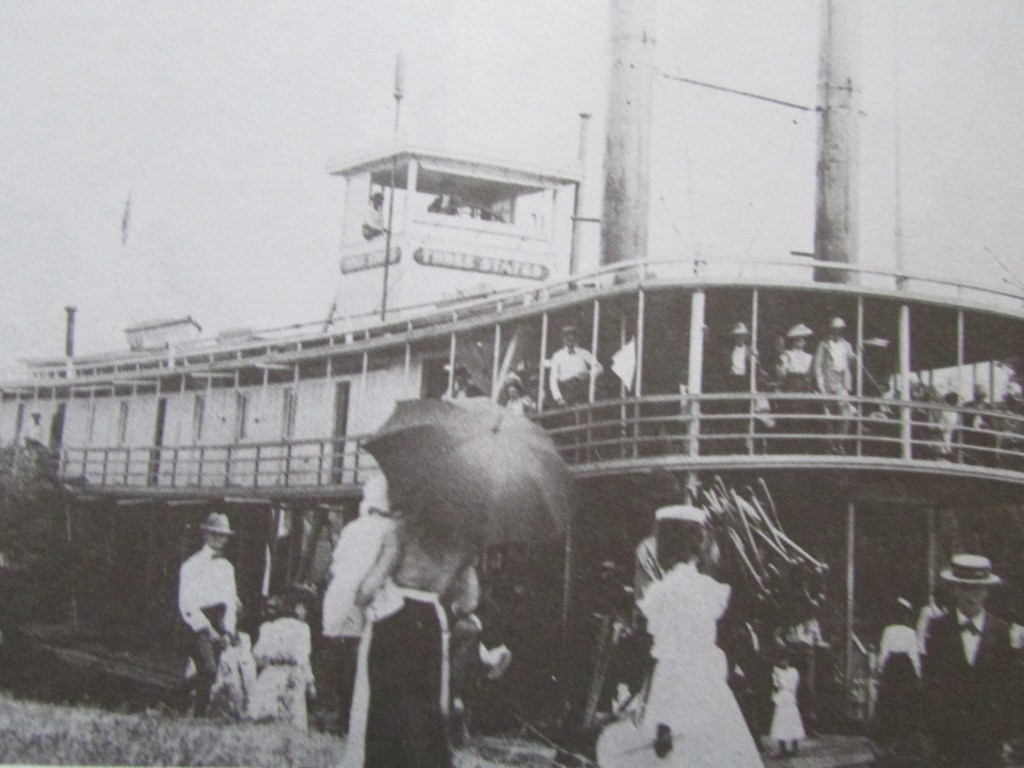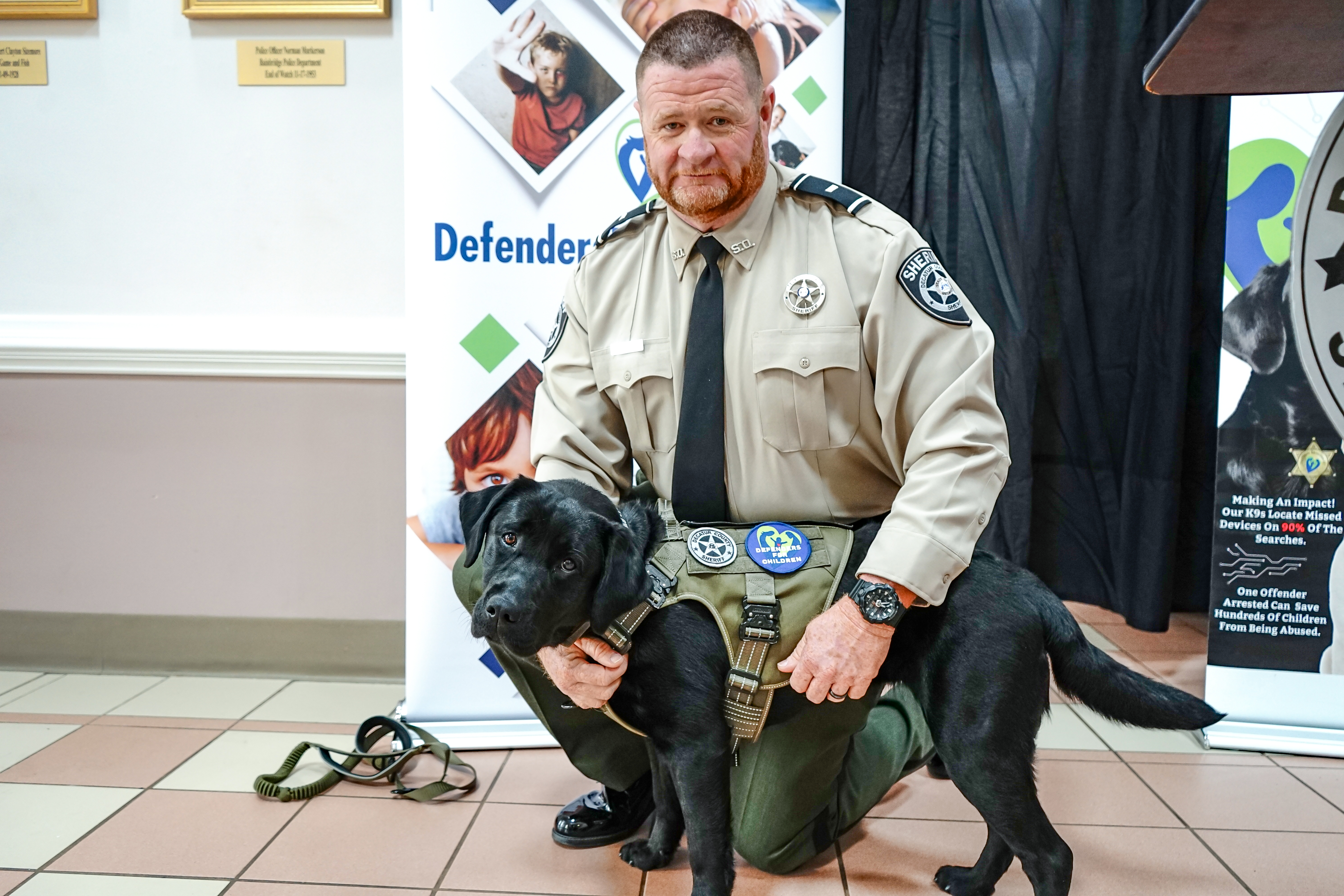Did He Really Fall?
Published 12:30 pm Sunday, September 17, 2023
|
Getting your Trinity Audio player ready...
|
Dear Lord, Have mercy on me, for the ocean is so big and my ship is so small. – a quote from the Mariners Prayer.
It seems that the men that do high risk work have a tendency to be superstitious. Race car drivers have lucky charms, baseball players have lucky socks, men who walk on the girders of tall buildings have their share of rabbit’s feet. The steamboat men of by gone days, also had their share of superstitions because it seemed that death was always stalking the steamboats.
The story of the steamboat, “Three States”, that was built from the remains of another steamboat, the “Janie Rae”, seemed to have inherited the tendency to be a hard luck ship or as the crews called it, a rotten ship, from her. So, for today, we will delve into the supernatural and see if you think that these steamboats were haunted. We may need an adult beverage for this scary story.
Many sailors were very superstitious. It just goes with the job. Going out to sea was, and still is, one of the most hazardous jobs that a man can engage in. There are many circumstances in which a person can lose his life. I imagine that sailors wanted to have some type of edge up on what may be bad luck. However, not only can a sailor see a time of bad fortune, but also, a ship can too. Then mostly it is believed that it is haunted by demons. This is what the rumors were involving the steamboats: “Janie Rae” and the “Three States”.
First, let us examine the fate of the “Janie Rae”. Her problems started when she took the place of two ships which had gone down within two days of each other, one with casualties. This string of bad luck started in 1897, which proved to be a costly year for the Independent Ship Line. Two ships, the “City of Columbus” and the “J.F.C. Griggs”, saw their demise with both sinking when they hit a snag.
The “City of Columbus”, was lost around midnight on March 30th. She was going from Apalachicola, in Florida, on up the Chattahoochee River, delivering the mail. The ship was about two miles above Gordon, Alabama, when it hit a snag and quickly went down. Luckily, no lives were lost in this sinking.
Two days later, the “J.F.C. Grigg’s” sank at Barnetts Landing at 9:30 in the evening. Along with losing the ship in the accident, three of the crew men perished. Eugene Westbury, the Chief Engineer and two deck hands were killed when this ship struck a log that was embedded in the river bed. With the vessel traveling at full speed when it hit this obstruction, the impact caused the log to be driven right through the hull and ended up stuck in the upper deck.
Engineer Westbury was last seen in water up to his waist, furiously bailing out the sinking ship. His wife was a passenger on board and was saved along with a large number of other passengers. Two deck hands were helping others off the boat, when they, too, disappeared into the muddy water.
After the wreck of the “J.F.C. Grigg’s”, Captains William Gaines and Walter Pryor worked at the scene of the accident to remove the machinery. Later, they came back at low water and tried to recover the hull.
To fill this large gap in the Independent Line’s service, a replacement vessel, the “Janie Rae”, was purchased. She was built in Jefferson, Indiana. This vessel was a 118-ton sternwheeler. Her measurements were 110 feet long 25.9 feet wide and needed a water depth of 3 feet to float. She also sported 12 passenger cabins.
As part of her duties, the “Janie Rae”, would be carrying the mail, like the two vessels she was replacing. She also was no stranger to Bainbridge, as we were one of her regularly scheduled stops.
The “Janie Rae” started out like a normal steamboat but somehow her aura changed and she had a rather short but violent career, which included the possibility of carrying a murderer on board.
This event started when Thomas Broadway, a Calhoun County, Florida, logger, took a trip on the “Janie Rae”. He was a deck passenger, who was going on down the Apalachicola River looking for work. His first scheduled stop was at Blountstown, Florida. When the steamboat neared this landing, Broadway was awakened by a deck hand. The man said, that he had seen Broadway get up and begin to walk on the deck. Then, when he looked away and looked back, Broadway seemed to have just vanished. No one knew what had happened. It was generally thought that Broadway either walked, fell or was pushed, overboard.
When this disappearance was reported to the Captain, the steamboat pulled over to the bank and stopped. The crew men then searched the river for the logger. Every effort was made to find him but to no avail.
Then two days later, on May 26th, the “Janie Rae” sank at her dock at Blountstown Bend. Apparently, she had struck a snag but no one noticed. Now, everyone believed that the snag was the body of the logger, who had lost his life just some 48 hours before.
With their best running boat gone; the Independent Line hired a crew from Apalachicola to retrieve what remains they could from the “Janie Rae”. The water level had gone down and she was now resting in 5 feet of the chocolate colored liquid. However, to get to the precious machinery, they had to burn her cabins and upper decks. The men who crewed aboard the boat felt this was a good thing for the fire would purge the boat of the devil which had stalked her.
A few days later, the steamboat, “Naiad”, was working her way on down the Apalachicola River, when the crew found Broadway’s body floating just up ahead. They then worked to retrieved his body. Thomas Broadway was then buried along the banks of the river, as was the customary way of internment back then. Many others that had lost their lives were given a similar burial. Makes you wonder how many people had their final resting place on the banks of our rivers.
By mid-June the Independent Line had replaced the “Janie Rae” with a new, light draft steamboat named the ”Three States”. This new boat received the transplanted organs: boiler, the boiler piping and engine, from the “Janie Rae”.
The “Three States” was built in Apalachicola, in 1899. She was named this because she was to serve Alabama, Florida and Georgia, and it was from these states, that most of her cargo and passengers would come from. She was a moderate draft boat with a tonnage of 124 pounds, 140 feet in length and 26 feet in width which was rather wide for the Flint River. However, she had a barge shaped bottom that drew only 15 inches of water. It was the only boat at this time, that was constructed with such a shallow draft. It also featured ample room for freight and plenty of comfortable rooms for passengers. However, it also had that used machinery from the “Janie Rae”. Was this the cause for her to become the scene of murders, to sink several times and be prone to burning, something which she did at her wharf in Columbus?
On the “Three States” first voyage, after only five days, trouble began. Captain Long had found several deck hands gambling. When he ordered them to stop, they refused. He then threatened to put them off as a lesson to others who thought they didn’t have to listen to the captain’s orders.
Being disciplined in front of the other crew members caused the gamblers to become angry. This is when Captain Long ordered the boat to come about and return to Columbus. While the “Three States” was being turned, two of the five gamblers jumped off. Officers went after them and seized the two. These men, along with the other three. were then chained in the hold of the ship.
When the “Three States” docked again in Columbus, warrants for gambling and mutiny were sworn against the five men. They were sentenced to a year on a chain gang. At this day in time, most men did not survive for a year living under the conditions of the chain gang.
Only six weeks later, the “Three States” ran aground on a sand bar. This damaged her sternwheel. Captain Long felt that the steamboat was unable to go on, so he left the boat and took a train back up to Columbus, 52 miles away. It is a major “no, no”, for a captain to leave his ship.
While he was gone, the crew made temporary repairs and proceeded down river without him. Better repairs were made as the vessel went along and the “Three States” made it down to Apalachicola with no other problems.
Unfortunately, the streak of bad luck that began in the career of the “Three States” was not yet over. In early 1900, she broke her shaft when she tried to steam too fast up the Chattahoochee River and was dry docked in Columbus for repairs. With its usual unpredictability, the Chattahoochee River rose up several feet, causing the “Three States” to float high above her wharf. When the river receded, it left behind two feet of mud on the wharf and inside the “Three States”. After getting all of this cleaned up, the “Three States” was once again at work on the rivers.
One would think that the “Three States” had now run of out bad luck and would get a break. However, it seemed only to intensify in 1901. On a trip up river from Apalachicola, once again, a deck hand, Crum Grant, either fell, jumped or was pushed overboard in the same unknown fashion as what had happened on the “Janie Rae”, and in the same place.
Remember, the “Three States” was powered with machinery from the “Janie Rae”. Could there be some mystical revenge at work here? The circumstances which surrounded these happenings were very similar. It was as though Grant may have been pushed overboard to his death. If so, was he pushed by Broadway?
Grant’s body was not found until the “Three States” was on her return trip down the Apalachicola River. Once again, a body was buried on the banks of the river.
Later that year, 2nd Engineer J.I. Wells, died while on the “Three States”, on a trip down the Chattahoochee River. He had contracted dysentery and by the time a doctor was available, it was too late and nothing could be done to help him.
As if all of those happenings were not enough, in December of 1901, the “Three States”, was partially destroyed by a mysterious, early morning fire. The alarm went off and the fire department came. They concentrated their efforts on saving her hull. They did this by cutting a hole in her hull so she would set down on the river’s bottom. This strategy worked.
Most people thought that the “Three States” was damaged beyond repair. Twice now the machinery had burned. However, the hull was repairable and was sold to the highest bidder. Once again, the “Three States” was resurrected and went to work, this time on the Suwannee River. However, after only a few months, she returned to Columbus, and once again, was in need of repair. To seemingly prove this point, she sank slowly at her wharf and was once again resurrected.
Apparently not superstitious, in 1902, the newly formed Bainbridge Navigation Company, bought her and added her to their fleet, the first boat that they had purchased. Another company wanted the machinery from the steamboat but they did not come to claim it, so everything was sold to Bainbridge. Her hull was repaired and it was outfitted in style. It would now accommodate 75 passengers in comfort. It was equipped with fine furniture for its cabins as well as carpeting. Even hot and cold baths could be arranged for.
The “Three States” was now assigned to Captain T.B. Whiteside, one of the best captains of this time. Captain Whiteside’s wife even served as purser on board. This was only one of very few women who worked in this exclusively male world of the steamboat. However, Captain Whiteside didn’t get to navigate the “Three States” for very long. Tragically, he died of pneumonia. Once again, a death. Now the steamboat was sold, this time to the Georgia-Florida Navigation Company.
Here the history on the “Three States” drifts into the past. It did continue to serve on the rivers because there is a record of it sinking on a sandbar when it scraped a hole in its hull. It was repaired and became a substitute steamboat when one boat on the Georgia-Florida Navigation Company’s line was being repaired. She continued serving until 1920, when she was abandoned somewhere on the Apalachicola River. Perhaps, it was where the two men who “fell overboard” and drowned were buried.






